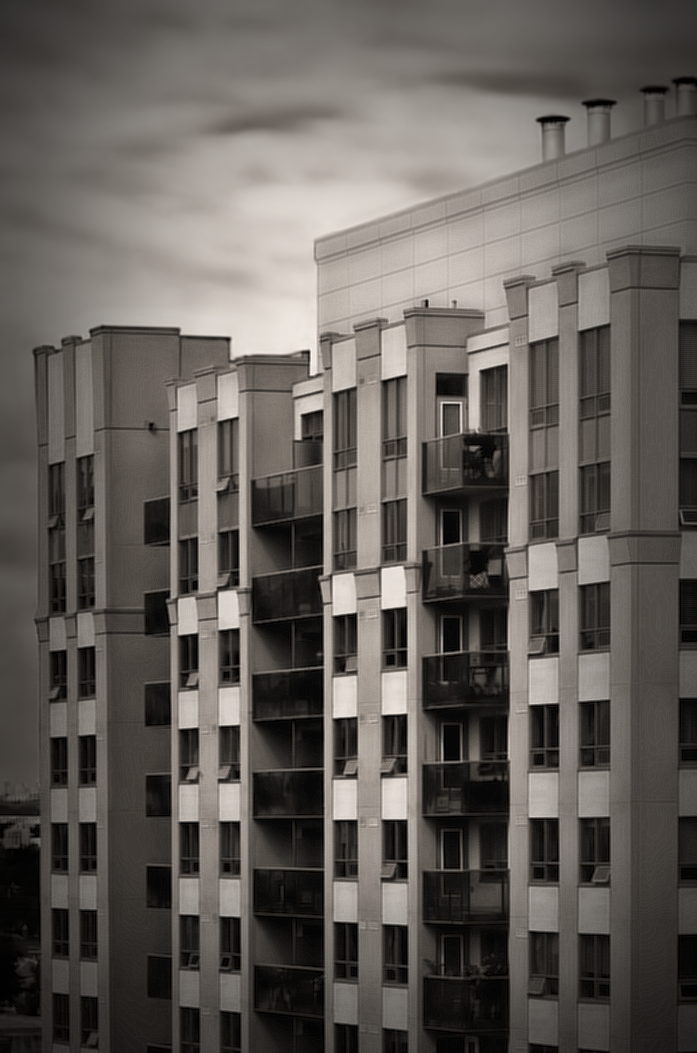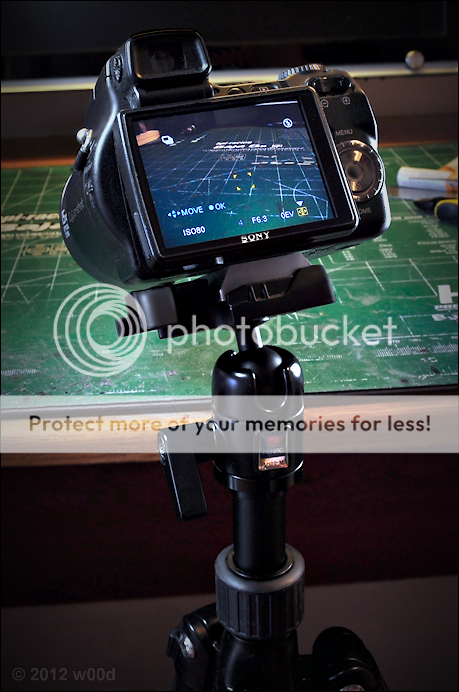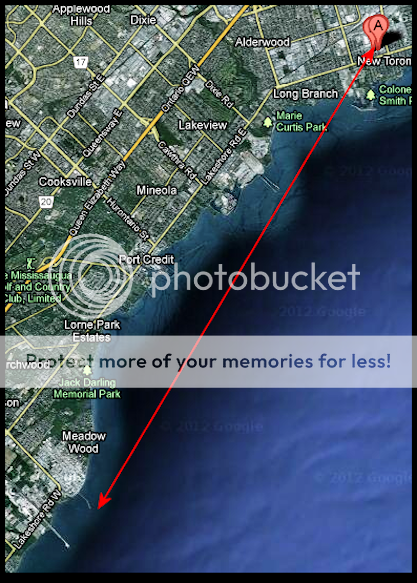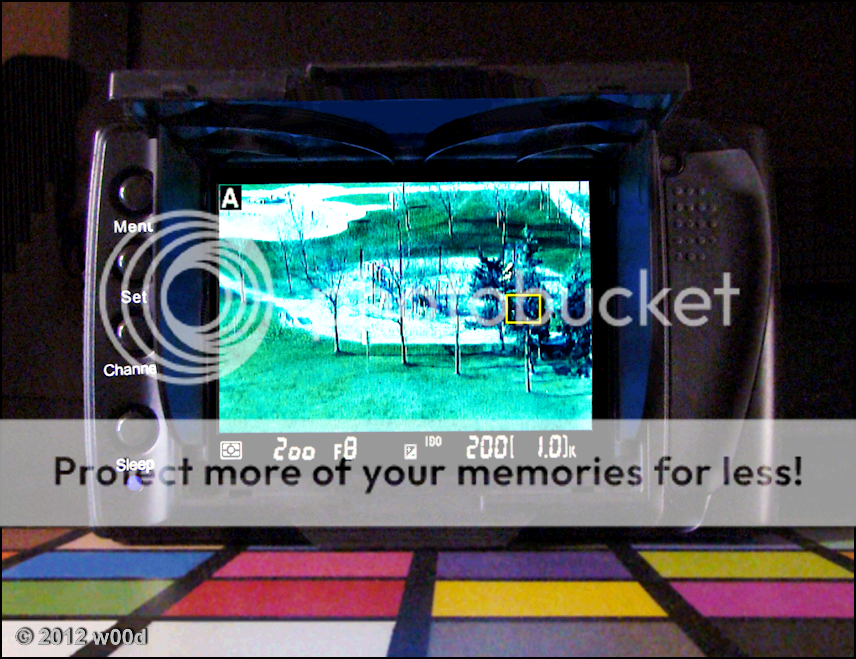 | |||
| A week later and with less post-processing, less ART |
Monday, December 24, 2012
Sunday, December 23, 2012
Apartment Blocks
Playing with the Photo-editor
*** HTML Editor Cheat ***
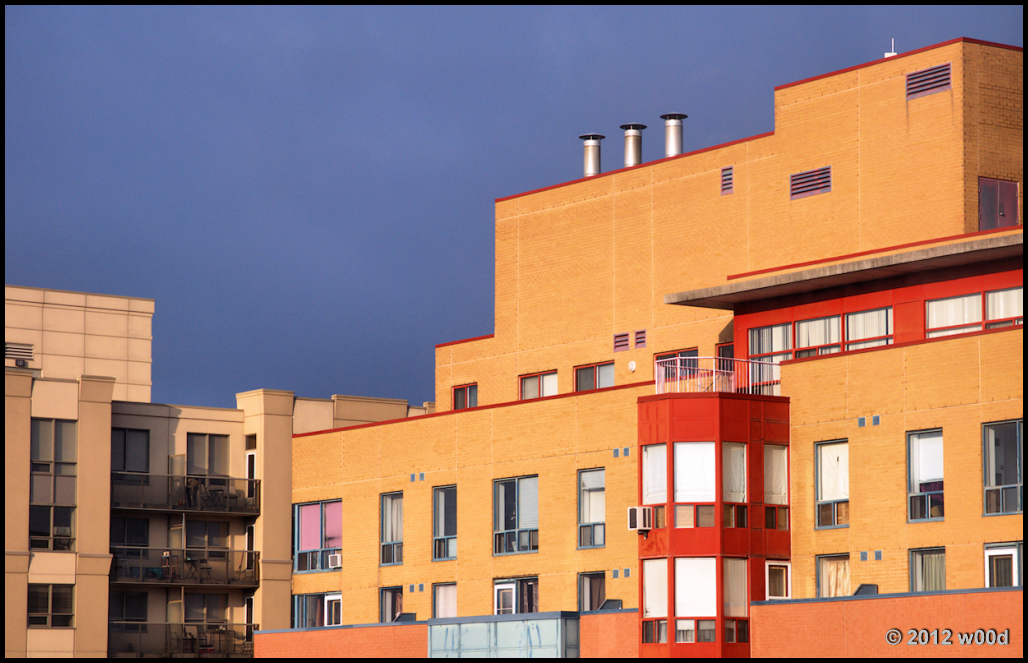 |
| Pleasing colours?
Black & White:
Moiré Pattern Removal and Vignette with Local Contrast Enhancements |
*** HTML Editor Cheat ***
Monday, December 10, 2012
LSD-NiMH Rechargeable Batteries
Low Self Discharge (LSD) are an improved type of NiMH rechargeable battery introduced in 2005 and are the only type of battery I will use. Here's why, given the self discharge rate of conventional NiMH Batteries (let's call them old tech) being unacceptable I've found the following brands will meet my needs. Therefor needing batteries that are ready to go at a moments notice I found on average LSDs will have a longer shelf life as they will retain most of their stored capacity by year end giving approximately 1500 re-charge cycles or more. The 'eneloop' brand are claimed to hold their charge for 5 years with 1,800 cycles. LSD rechargables are also available in Triple-A (AAA) sizes.
According to a battery tutorial from photo tuts+ "Conventional NiMH batteries at the approximate capacity loss of 10% after the first 24hrs and 1% per day after will loose just over ½ of their capacity by month's end." This is why Conventional NiMH rechargeable batteries are unsuitable for powering clocks, TV remotes or any device where it's batteries are expected to last a long time. Conventional (old tech) NiMH rechargeable batteries simply self-drain too fast.
Quote: Low Self Discharge (Wikipedia) NiMH are "a new type of nickel–metal hydride cell (the low self-discharge nickel-metal hydride battery, LSD NiMH) was introduced in 2005 that reduces self-discharge and therefore lengthens shelf life. By using an improved electrode separator and improved positive electrode, manufacturers claim the cells retain 70% to 85% of their capacity after one year when stored at 20 °C (68 °F). These cells are marketed as "hybrid", "ready-to-use" or "pre-charged" rechargeables. Standard NiMH batteries may lose half their charge in the same time period. Retention of charge depends a lot on the battery's impedance or internal resistance (the lower the better), and on the size of the battery as well as the mAh rating. Besides the longer shelf life, they are otherwise similar to traditional NiMH batteries of equivalent capacity and can be charged in typical NiMH chargers"
 |
| Longer storage with LSD rechargables |
 |
Four popular Low Self Discharge (LSD) Rechargeable Batteries ... in order of appearance
|
 |
| SONY CycleEnergy: AA, NiMH, 2000 mAh |
- Batteries: Learning to buy and use them wisely ~ photo tuts+
- The Best AA Battery for Flash ~ slrlounge.com
- NiMH Low-Self-Discharge - Wikipedia
Monday, December 03, 2012
DIY: Tripod Quick Release Plate
It was one of those times buying my Tripod on-sale might not have been a good idea. Only after purchasing did I discover this particular Tripod had been discontinued and much to my disappointment extra Quick Release Plates or QR-Plates (Fig 1) we're unavailable.
Needing an extra QR-Plate but never to be beaten into submission by those who would suck me dry of my cash I decided to reverse engineer the part by putting my DIY (do-it-yourself) skills to the task but this was not what was going to happen.
Following is my short story of what was supposed to be a DIY project instead turned into the creation and the reverse engineering of a part by professional and skilled CNC Machinists.
Copying the QR-Plate: My measurements
Copying the QR-Plate: My measurements
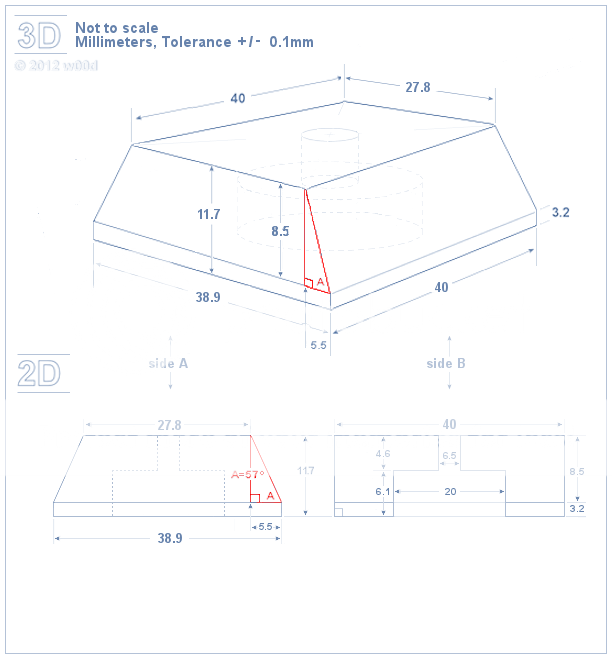 |
| Fig 2: QR-Plate measurements |
I wanted to make the new QR-Plate myself and given some materials, time, a Dremel with a few hand tools this was certainly possible. But it was then I realized I have some great friends over at Southern Oregon RC (SORC) who have CNC Machinery therefor they might be tasked to do the work for me, if of course asked very nicely? A skilled CNC operator and his CNC Milling Machine would certainly do a much better, a more professional job than could be done with ordinary hand tools of this hobbyist.
So the next order of business was to ask my good friends if they would be willing to make the part and would they quote me a price if they we're agreeable. They said yes although they didn't give me a price, both friends Tiger and Pelagic Pilot unbeknownst to myself simply got to work making the part.
(Fig 3 and 4) The first CNC Tripod Quick Release produced is made out of aluminum and was fabricated with his CNC Machine by my good friend Tiger (SORC) who is an accomplished engineer. The surprise coming out of this story was him asking me for the angles of two sides of the item I needed cut. At this time he went silent for a few days which left me somewhat puzzled as I thought maybe he had simply forgotten about me. However this was not the case because the next thing I knew much to my delight was a couple of photo's of the finished product and Tiger asking for my shipping address, surprise indeed!
(Fig 5 and 6) The next example is made out of Delrin Acetyl (plastic) and was created by another good friend Pelagic Pilot (SORC) who also runs his own CNC business, BlueFin CNC LLC. From what I could tell given I'm no CNC expert there's quite allot of work between my measurements and the actual cutting of the piece. As I understand Tyson transferred my measurements I had drawn up within a simple photo-editor into his CAD program (Alibre CAD) which creates a .STL file which is then exported into another application (MeshCam). Now armed with the .STL data MeshCam can now creates the necessary 'toolpath' or the path the cutting tool will travel while cutting. Alibre and MeshCam screenshots for those interested.
It's good to have good friends
It's GREAT to have such friends especially when they have the skills and machines to do such wonderful work. Both Tiger and Pelagic Pilot put allot their talent, their time and even their own money into making my project come alive which is certainly appreciated. I don't have enough words to express my gratitude except to say, GREAT job guys, thank you, the world is a better place for having you guys! Yes I'm very excited and can't wait to try them out but now I'm only waiting for the postman ...
It will be interesting to see how the two materials, the aluminum verses the Delrin Acetyl compare. For example the plastic (Delrin Acetyl) will certainly be the lighter of the two materials but the aluminum version might prove more durable?
It's good to have good friends
It's GREAT to have such friends especially when they have the skills and machines to do such wonderful work. Both Tiger and Pelagic Pilot put allot their talent, their time and even their own money into making my project come alive which is certainly appreciated. I don't have enough words to express my gratitude except to say, GREAT job guys, thank you, the world is a better place for having you guys! Yes I'm very excited and can't wait to try them out but now I'm only waiting for the postman ...
It will be interesting to see how the two materials, the aluminum verses the Delrin Acetyl compare. For example the plastic (Delrin Acetyl) will certainly be the lighter of the two materials but the aluminum version might prove more durable?
 |
| Fig 3: Machined Aluminum, Side and top © Photo by Tiger |
 |
| Fig 4: Machined Aluminum, Bottom © Photo by Tiger |
 |
| Fig 5: Beautiful work deserves a nice frame, CNC machined Delrin Acetyl © Photo by Pelagic Pilot .. |
 |
| Fig 6: Added Value, rounded corners © Photo by Pelagic Pilot ... |
FYI: So what is a Tripod Quick Release Plate (QR-Plate) you might ask? If your not a photographer or looking to get into photography or you're just curious it's a reasonable question. QR-Plates basically allows for quick mounting and dismounting of a camera onto and from a typical tripod. None of which are standardized as they come in all shapes and sizes all with varying costs to match. Google: Tripod Quick Releases.
 |
| Fig 7: Nikon D90 attached |
 |
| Fig 9: QR-Plate inserted into the locking mechanism |
 |
| Fig 8: QR-Plate locking mechanism |
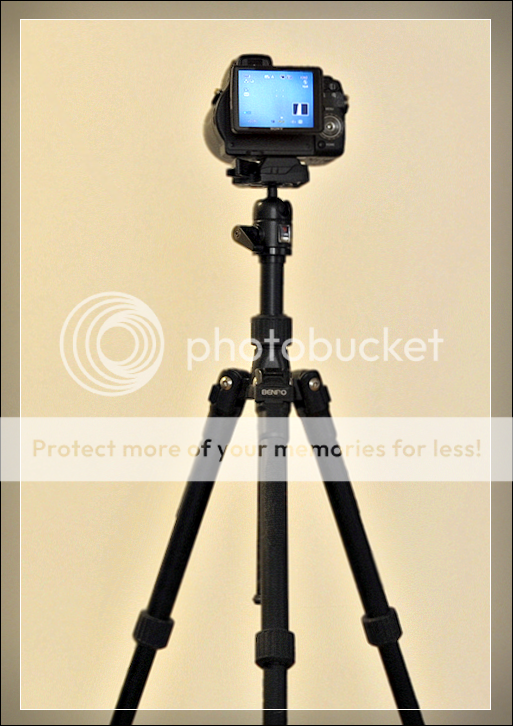 |
| Fig 10: Sony DSC-H9 mounted. |
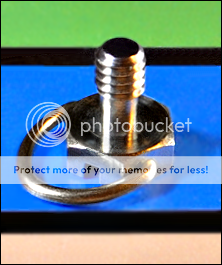 |
| Fig 11: QR-Plate Fastener |

|
| Fig 12: Part being copied: QR-Plate and Fastener |

FIN
Friday, November 16, 2012
In-depth LENS Primer by CANON, The EF Lens World - Canon Europe
A common complaint when using 'Sport' Cams for our Aerial
Photo/Video needs is the inerrant 'barrel distortion' which is also
often associated with the use of Wide Angle Lenses. In short the wider
the 'angle of view' the greater the 'barrel distortion' ...
Although
this distortion can be fixed (somewhat) in post-processing but for it to
be done in-camera the manufacture needs to implement it within
Firmware. Which they may or may NOT have done as for videoing general
'sports' action 'barrel distortion' is not that much of a concern.
Either way it's not an easy fix as it's a issue with ALL wide angle
lenses and to fix in-lens would certainly drive up the cost of it's
manufacture. This would also drive up the cost for a market that does
not require it fixed. I might even go so far to suggest 'Sports'
Cams although can be cheap and easy to implement (thus operate) might
not be the best choice for an Aerial Camera especially if 'barrel distortion' is
your number main concern.
Although 'barrel distortion' is only one characteristic and issue associated with LENS design so with that in mind I offer the following reading material.
I've found a pretty darn good read about lenses, lens design and their associated characteristics which may help one choose a more suitable camera and lens system for their NEXT AP Bird. Which is more or less in keeping with what you might want out of your next Aerial Camera or if simply looking for a new camera/lens it would certainly be in your best interest to read, it's worth the read ...
For this in-depth primer to Lenses by none other than CANON, download and read the PDF
This reader's review:
"1933, the Precision Engineering Research Laboratory (later changed to “Canon”) was established in a room in a three floor apartment building in Roppongi in Tokyo, as a workshop for building high-quality 35mm cameras"
"1946, Serenar 50mm f/3.5! Canon first began working on lenses not long after the end of WWII. Developed and produced completely in-house, the first lens to see the light of day was the Serenar 50mm f/3.5. Serenar means “clear,” symbolising the clarity that the development team was aiming for."
Wait a minute, so who was making Canon's lenses prior to 1946?
I pulled the two quotes from the recommended document, The EF Lens World, where Canon are talking about the history of their Lenses. But nowhere do they mention who it was making their lenses prior to making their own. As it happens I know who exactly who it was and any guesses as to who? Yes it was NIKON as they were making professional grade lenses for the military, universities and consumers alike since the turn of the century. I found that morsel of info documented in the history of photography and this 'history' is an interesting story in itself I would certainly recommend reading, History of Photography - WiKi.
Yes EF Lens World was created by Canon so there is a certain amount of 'Corporate BS' that needs to weeded through to get at it's information. As a side note see FUD, Fear, Uncertainty and Doubt, also Weasel Words by Ken Rockwell.
Yes the information provided would be true for all LENS manufactures so as I see it the challenges of LENS construction set forth by Canon are no different than those of other manufactures. Given the information is relevant to all manufactures I had no issues posting what could be construed as Canons own self serving hype.
Putting the 'Photography' back into Aerial Photography
I've found a pretty darn good read about lenses, lens design and their associated characteristics which may help one choose a more suitable camera and lens system for their NEXT AP Bird. Which is more or less in keeping with what you might want out of your next Aerial Camera or if simply looking for a new camera/lens it would certainly be in your best interest to read, it's worth the read ...
For this in-depth primer to Lenses by none other than CANON, download and read the PDF
- EF Lens World - Canon Europe, Google Search
This reader's review:
"1933, the Precision Engineering Research Laboratory (later changed to “Canon”) was established in a room in a three floor apartment building in Roppongi in Tokyo, as a workshop for building high-quality 35mm cameras"
"1946, Serenar 50mm f/3.5! Canon first began working on lenses not long after the end of WWII. Developed and produced completely in-house, the first lens to see the light of day was the Serenar 50mm f/3.5. Serenar means “clear,” symbolising the clarity that the development team was aiming for."
Wait a minute, so who was making Canon's lenses prior to 1946?
I pulled the two quotes from the recommended document, The EF Lens World, where Canon are talking about the history of their Lenses. But nowhere do they mention who it was making their lenses prior to making their own. As it happens I know who exactly who it was and any guesses as to who? Yes it was NIKON as they were making professional grade lenses for the military, universities and consumers alike since the turn of the century. I found that morsel of info documented in the history of photography and this 'history' is an interesting story in itself I would certainly recommend reading, History of Photography - WiKi.
Yes EF Lens World was created by Canon so there is a certain amount of 'Corporate BS' that needs to weeded through to get at it's information. As a side note see FUD, Fear, Uncertainty and Doubt, also Weasel Words by Ken Rockwell.
Yes the information provided would be true for all LENS manufactures so as I see it the challenges of LENS construction set forth by Canon are no different than those of other manufactures. Given the information is relevant to all manufactures I had no issues posting what could be construed as Canons own self serving hype.
Putting the 'Photography' back into Aerial Photography

Tuesday, November 13, 2012
Wednesday, November 07, 2012
Dull Day Over Lake Ontario
Local trivia: The Smoke Stack (Powerhouse) and Roof Tops peeking out above the tree tops is part of a local landmark, the old Lakeshore Psychiatric Hospital (history) as it was originally named. Later the old hospital was renamed the Mimico Branch Asylum, Mimico Hospital for the Insane which is in the western part of the village of Mimico (as it was called at the time) which later became the part of town known as New Toronto. New Toronto became part of the borough (and later, in 1984, city) of Etobicoke which was merged into the new City of Toronto (part of the Greater Toronto Area or the GTA) in 1998.
 |
| Street View: Lakeshore Psychiatric Hospital |
Construction
of the asylum started in 1888 and was completed in 1889. The hospital
opened on January 21, 1889 with ten male patients and two attendants who were sent to get the institution ready for the influx of inmates that we're to follow. Dr. Nelson Henry Beemer who became the first superintendent was a strong believer in "meaningful work" as a form of rehabilitation. Unfortunately, like all male and female asylum inmate laborers in Ontario during this period, none received any pay for their so called "meaningful" work.
The old asylum closed it's doors on September 1, 1979. At
the time of the it's closing the institution was seen as "an
antiquated relic of Canada’s Victorian past" which was inspired by the
prevailing trend of deinstitutionalization. The term 'deinstitutionalization' was an idea born out of the thinking mental health patients would be best rehabilitated living out in the
community as opposed to being committed (locked-up) within an institution. However those decisions we're not without political controversy as many believed
at the time it was simply an attempt by government to cut the upward spiraling cost of health care in Canada without any respect and concern as to the consequences of what those decisions might bring about.
History proved the hospital's patients we're the victims of this controversy as it was for patients of many psychiatric institutions within Canada. Many we're simply cast adrift to became homeless without adequate means of looking after themselves both physically and mentally. And for a few they remain homeless to the present day. Fortunately the most severely ill were institutionalized in the newly constructed Queen Street Mental Health Center. This facility was an up to date modern structure that was more suitable to the care of those in need of the most care.
History proved the hospital's patients we're the victims of this controversy as it was for patients of many psychiatric institutions within Canada. Many we're simply cast adrift to became homeless without adequate means of looking after themselves both physically and mentally. And for a few they remain homeless to the present day. Fortunately the most severely ill were institutionalized in the newly constructed Queen Street Mental Health Center. This facility was an up to date modern structure that was more suitable to the care of those in need of the most care.
 |
| Aerial view: Lakeshore Psychiatric Hospital |
The story is not without some 'colour' and on the somewhat lighter side is the haunting. In the years after the
asylum's closing it's certainly been a target for 'Social Graffiti' as there have been a number of silly rumors
and a some of the most far out urban legends. The most notable are reports by
some of the present staff and students who now occupy the former grounds. They claim they are visited on a regular basis by a ghostly appearance. As always as it is with stories of UFOs stories of an haunting have to be great for attracting tourists to an area. WOW scary "The
place is Haunted!" and joking aside, more here - Haunted or Not?
Video: Haunted Humber College - Main Floor
It would seem to me the only thing "haunted" here is the title!
... The video does show at least one of the buildings and how it currently looks.
The former Lakeshore Psychiatric Hospital current status:
... Active - Reused as Humber College South Campus
Video: Haunted Humber College - Main Floor
It would seem to me the only thing "haunted" here is the title!
... The video does show at least one of the buildings and how it currently looks.
The former Lakeshore Psychiatric Hospital current status:
... Active - Reused as Humber College South Campus
Tuesday, October 23, 2012
The Revolution Continues
Following are a few camera accessories for my Nikon D90 which I bought out of China.
These are low cost alternatives (clones) of the high priced items offered by those who I won't name. Safe to say these company's are well known, BIG, corporate wide and they certainly don't need me to do their advertising for them. If they do they can send some of that advertising dollar my way ...
However as said in the Latin caveat emptor or in plane English 'buyer beware' because we get what we pay for. And being the sneaky 'snake oil' promoters they are, they do make them look great on paper.
Aputure Timer Remote
... This product works as it should therefor I can say I'm happy with this item.
Aputure Timer Remote
... This product works as it should therefor I can say I'm happy with this item.
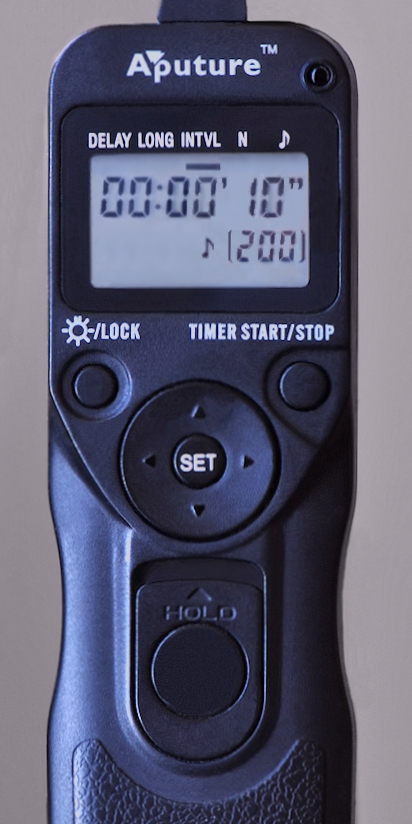 |
| Aputure Timer Remote |
Aputure Digital LCD Timer Remote for Nikon D90
 |
| The Aputure Gigtube Wireless Viewfinder for Nikon D90 displaying the Nikon D90 and it's Info Screen. |
Yes the viewfinder also works in Live View however the screen's resolution leaves allot to be desired even though it's tad larger than the D90's high-res display. As for functionality the only camera control on the remote is the Shutter Release.
In all honesty I can't say this particular wireless display is the equal of the on camera display, it's certainly not. With it's sub par screen giving less resolution than desirable the more concerning was it's RF Interference. To help reduce said interference I added another Ferrite Bead which did help reduce the screen noise. Nevertheless the viewfinder is usable out to about 15 feet before the Interference becomes a serious issue and almost unviewable. Close to the camera baring the less than perfect screen resolution it works well but the RF Interference increases in intensity the more distance I put between it's receiver and transmitter.
Now apparently Aputure are offering a new version of this viewfinder which they are calling the Gigtube Wireless II. And for added-value this Gigtube has a small camera built into it's transmitter. In theory at least their newest version should offer a better viewing experience as they have improved upon the viewfinder's screen. But again this info came by way of their marketing material and believing in "that" is what got me into trouble with Aputure's first version ... Ergo caveat emptor, again!
As for this version I feel it's one of those products where 'buyers remorse' would aptly describe my feelings after un-boxing and trying it for the first time. The excitement I felt during the un-boxing quickly dissipated after trying it for the first time.
It's my opinion Aputure went too "cheap" with it's display screen. The viewfinder on whole was usable assuming you don't mind a little RF interference however the image presented was very, VERY disappointing! Being only VGA (?) this viewfinder certainly would have benefited by more resolution, maybe a screen to match the high-res displays found in just about every modern DSLR?
A side note: I did voice my concerns about this 'Viewfinder' on the retailers 'User-Review' page and found they are censoring ALL negative comments for this products and for many other products also. I guess I shouldn't have been surprised but I couldn't and didn't TRUST any of user-reviews found on this particular retailer's site who's name I refuse to mention. In my defense I must say I was being as polite and professional as I could be, more so than here only because I didn't want my comments dismissed due to poor behavior on my part. Regardless my review never saw the light of day, so I'm saying it here ...
 |
| The Transmitter showing channel 4 of four available channels. |
Tuesday, October 09, 2012
Digital Caliper Battery Modification
The inspiration for this modification came from Digital Caliper Battery Hack by Robert C at Sparkfun Electronics. My motivation for doing the mod follows came from Caliper (WiKi) who showed me a very convincing reason why my particular caliper was prematurely draining it's battery.
QUOTE: Many Chinese-made digital calipers are inexpensive and perform reasonably well. One point worth noting is battery current when they are turned off. Many calipers do not stop drawing power when the switch is in the off position; they shut down the display but continue drawing nearly as much current. The current may be as much as 20 microamperes, which is much higher than many brands. Caliper (WiKi).
Given the issues outlined above with many Chinese-made digital calipers, I also went with this modification because I'm certainly cheap and hate the whole concept of throw-away-one-use batteries as the technological improvements of rechargeable batteries has come far I just don't see any reason or need for throw-away batteries as we move forward into the future.
QUOTE: Many Chinese-made digital calipers are inexpensive and perform reasonably well. One point worth noting is battery current when they are turned off. Many calipers do not stop drawing power when the switch is in the off position; they shut down the display but continue drawing nearly as much current. The current may be as much as 20 microamperes, which is much higher than many brands. Caliper (WiKi).
Given the issues outlined above with many Chinese-made digital calipers, I also went with this modification because I'm certainly cheap and hate the whole concept of throw-away-one-use batteries as the technological improvements of rechargeable batteries has come far I just don't see any reason or need for throw-away batteries as we move forward into the future.
The battery I used certainly has more capacity but more importantly I used a battery that was rechargeable but also had a very low self-discharge (WiKi) rate. This assured I will never need to buy any more batteries at least for a very long time to come. Also, it is important any rechargeable battery you consider must have a very low self-discharge rate. See my page, LSD-NiMH Rechargeable Batteries or Google "Low self-discharge rechargeable NiMh batteries" for more information and some choices as to specific brands.
The modification I implemented didn't take too long to complete and would be relatively easy to repeat for anyone who has some basic electronics or would know his or her "positive" from "negative" and their soldering skill would also be assumed. I would bet given the following photos would be all one needs in order to complete their modification. However, if more information is required I have provided additional linkages throughout this post.
FYI: It's been suggested this modification was somewhat "overkill" and realistically I would tend to agree. Therefore as it was also suggested at Sparkfun I pass on an alternative option that is simpler and it certainly requires NO electrical and/or soldering skill but will indeed assure long or longer battery life. Simply remove the calipers button type battery when not in use or in storage.
The modification:
FYI: It's been suggested this modification was somewhat "overkill" and realistically I would tend to agree. Therefore as it was also suggested at Sparkfun I pass on an alternative option that is simpler and it certainly requires NO electrical and/or soldering skill but will indeed assure long or longer battery life. Simply remove the calipers button type battery when not in use or in storage.
The modification:
 |
| Low Self Discharge (LSD) Double-A (AA) - 1.2v - 800mAh - NiMH - SONY CycleEnergy Rechargeable Battery |
 |
| You've heard of Fuzzy Dice well I have me a Fuzzy Battery. To aid a quick removal I attach the battery to the Calipers back-side with Velcro. |
 |
| Do'h, before using or photographing (I didn't) best not forget to reset your Caliper to ZERO! |
After disconnecting, the battery stores away quite nice and neat in the storage case
FIN
Additional Information:
- The Original Thought: The Inspiration... Digital Caliper Battery Hack by RobertC at Sparkfun.com
... Reading the comments for alternate ideas and solutions - Choosing your battery:
... LSD-NiMH Rechargeable Batteries - at w00ds Photo Muse, The Muse
... LSD-NiMH Rechargeable Batteries (WiKi) - Digital Calipers (WiKi)
- Capacitive Sensors - Additional reading by L. K. Baxter [PDF]
Subscribe to:
Posts (Atom)

